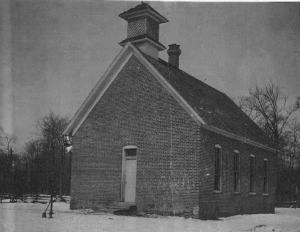History

Kirklin township is located in the southeastern section of Clinton County, in the State of Indiana. Originally included within the Jackson Township boundaries, Kirklin was organized in 1837. It assumed its present boundaries in 1841 when the western section was annexed to form Sugar Creek Township.
The township was named for Nathan Kirk who was the first permanent settler in the eastern half of Clinton County and for whom the town of Kirklin was also named. Kirk came to the county in 1826 and was the sole resident of this area until 1829 when Thaddeus Panburn and Daniel Hunter arrived. According to an early history, Kirk's cabin was the only stopping place for travelers and land hunters, and up to 1833 all the locations of incoming settlers were made within three miles of this location.
The construction of two roads through Kirklin Township made an important impact on the area's development. The New Castle Road (State Road 38), which linked New Castle with Lafayette, passed on an east-west line across the township's southern section. The Michigan Road (U.S. Highway 421), which stretched from the Ohio River north to Lake Michigan intersected the New Castle Road at a point which became the site Kirklin.
Nathan Kirk opened a tavern at the intersection of the Michigan Road and the New Castle Road. During the late 1820s. The tavern was the primary source of commerce until 1831 when Kirk opened a small mill along Sugar Creek.
These two roads brought settlers to the area though the population did not grow as rapidly as would be expected. The community did not incorporate until 1876 when the population stood at about 200.The Stowers House and the house just East are two of the township's earliest surviving structures from this period.
The construction of the Monon Railroad line through the township during the 1880s bolstered the area’s economy. Farmsteads such as the Dunn Farm, the Whitaker Farm, reflected the booming agrarian economy. A commercial area developed along Main Street and soon, one and two story brick commercial buildings such as the Farmer's State Bank lined the streets.
Several public buildings of note remain in the township. Two district schools on 1000 East and State Road 38 are reminiscent of the many one-room schools which once dotted the landscape. Kirklin Township's only existing historic church is the Scotland Christian Church. This simple, gable-front church was built in 1890. The adjacent graveyard contains burials from the 1850s.
Several other religious congregations also built churches in town. The Presbyterians constructed the town's first church in 1867. This frame building was replaced by the present Romanesque Revival style building in 1890. The Methodist Episcopals, who organized the township's first congregation, built its church in 1870. The building now serves as a residence.
Early residential architecture consisted of craftsman, bungalow, gable-front, American Four-Square, or Queen Anne style homes.
The town's most prominent early twentieth century building is the Kirklin Public Library. This outstanding Neoclassical building was completed in 1915 with a grant from the Carnegie Foundation. The building was listed in the National Register of Historic places in 1996.
